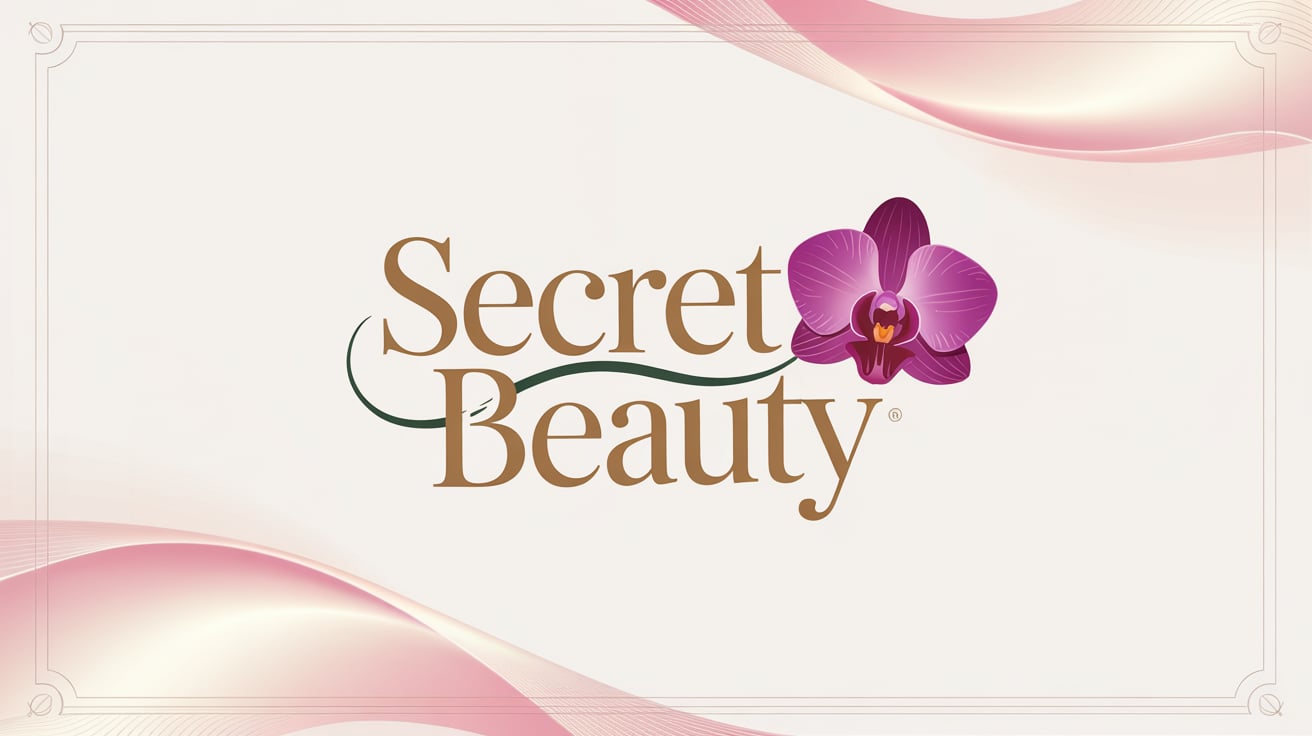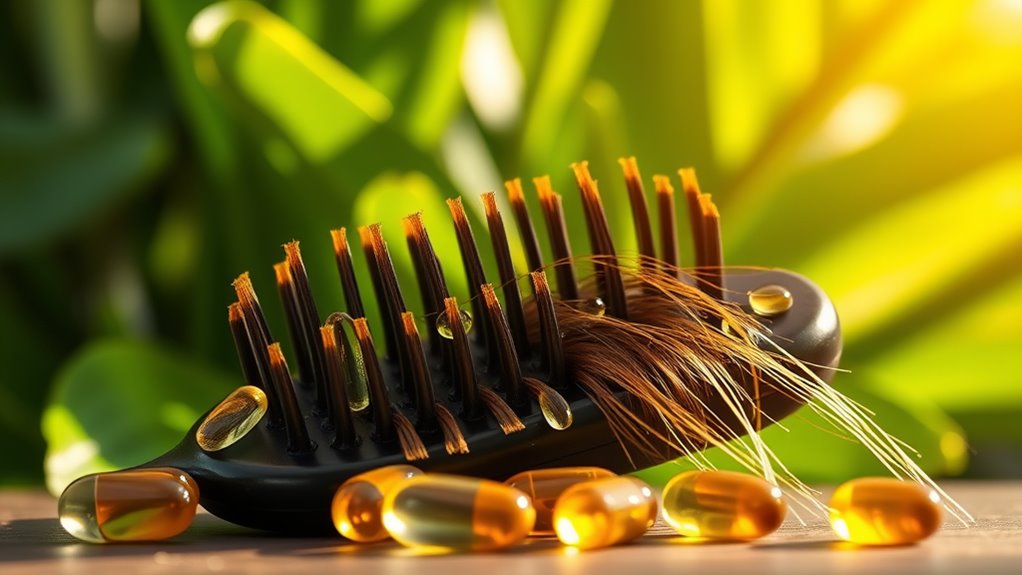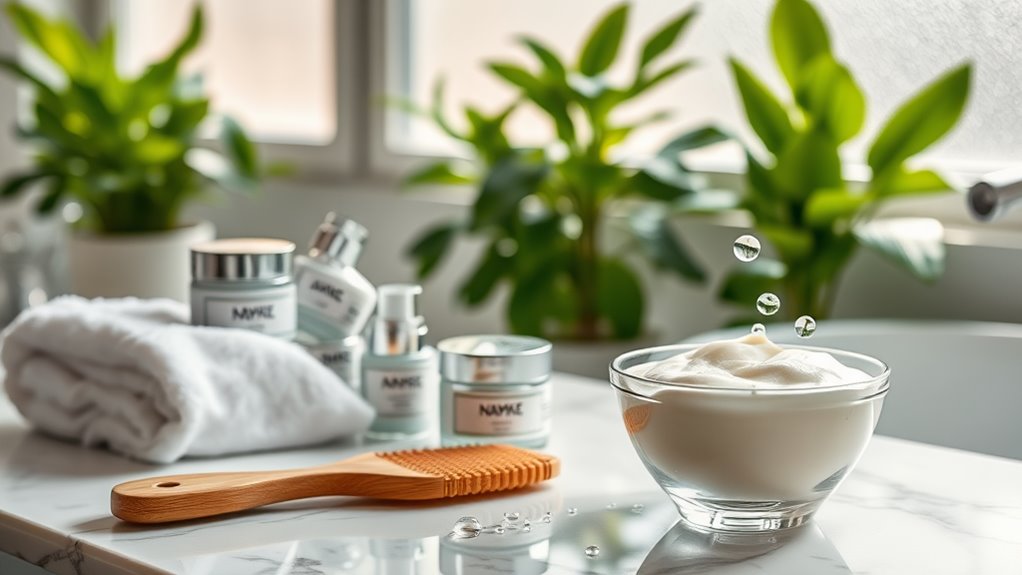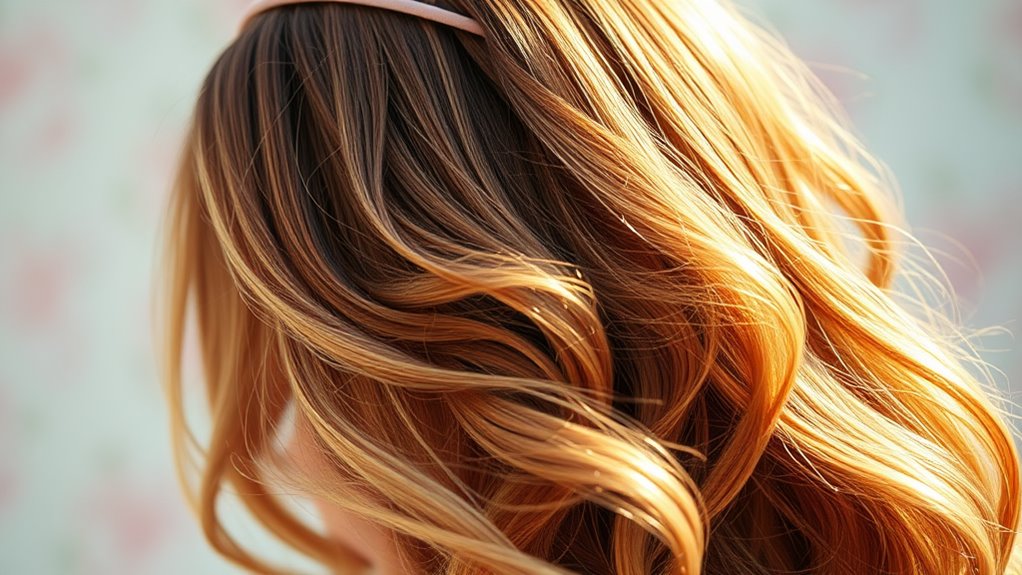Weekly Plan That Turned My Thin Hair Around
A dedicated weekly plan can truly transform your thin hair. Start by setting realistic growth goals, focusing on strength and health. Each morning, use sulfate-free and volume-enhancing shampoos, followed by conditioners on mid-lengths to ends. In the evening, apply lightweight oils and massage your scalp for better circulation. Prioritize nutrition with protein, biotin, and omega-3s, while also managing stress. Regularly assess your progress and adjust your plan for the best results. Discover the key steps to success!
Key Takeaways
- Set realistic hair health goals, focusing on volume and strength over length, and adjust expectations to hair’s natural growth rates.
- Implement a daily hair care routine using sulfate-free and volume-enhancing products, along with lightweight conditioners and heat protectants.
- Nourish hair overnight with lightweight oils and leave-in conditioners while massaging the scalp to enhance circulation and treatment absorption.
- Maintain a balanced diet rich in protein, biotin, omega-3 fatty acids, and zinc, while staying hydrated for optimal hair health.
- Regularly assess progress by tracking hair texture and thickness weekly, adjusting your routine based on improvements observed.
Understanding Thin Hair: Causes and Challenges
Understanding thin hair is essential, especially since it can stem from various causes and present unique challenges. You might be dealing with genetic factors, hormonal changes, nutritional deficiencies, or stress, all of which can impact hair density.
Creating a thin hair plan tailored to your specific situation is vital. Start by identifying potential triggers; for instance, evaluate your diet and lifestyle. Incorporate nutrient-rich foods that promote hair health and consider supplements if necessary, as superfoods for hair growth can significantly enhance the strength and vitality of your strands.
Additionally, be mindful of your hair care routine, avoiding harsh chemicals that could exacerbate thinning. Embrace techniques like gentle styling and regular trims to enhance volume.
Setting Realistic Goals for Hair Growth
Here are some strategies to help guide your journey:
-
Define a Timeline: Set a specific timeframe for your goals—like 3 or 6 months—to measure progress.
-
Focus on Health: Prioritize hair health over length; strong hair is more important than just growing it out.
-
Celebrate Small Wins: Acknowledge improvements, whether it’s increased volume or less breakage.
-
Adjust Expectations: Understand that hair grows about half an inch per month; patience is key.
-
Incorporate essential nutrients like biotin and omega-3 fatty acids into your diet, as they are proven to promote hair growth and strength.
Daily Hair Care Routine: Morning Essentials
In the morning, your hair deserves the best start to the day.
Choosing the right shampoo, mastering conditioning techniques, and selecting effective styling products are key to achieving healthy locks. Incorporating strengthening treatments into your routine can significantly enhance the vitality and resilience of your hair.
Let’s explore these essentials to help you create a vibrant daily hair care routine.
Essential Shampoo Choices
Choosing the right shampoo can make all the difference in your daily hair care routine.
When you select a shampoo, consider your hair type and specific needs to maximize results.
Here are some essential choices you should make:
-
Sulfate-Free Formulas: Gentle on your scalp and hair, preserving natural oils.
-
Volume-Enhancing Shampoos: Perfect for thin hair, giving it that needed lift.
-
Moisturizing Shampoos: Ideal for dry hair, providing hydration without weighing it down.
-
Color-Safe Options: Essential if you’ve dyed your hair, as they protect color vibrancy.
Nourishing Conditioning Techniques
Conditioning is the secret ingredient for achieving healthy, lustrous hair that feels as good as it looks. Start your daily routine by applying a high-quality conditioner that suits your hair type. Focus on the mid-lengths to ends, where hair tends to be drier.
For maximum nourishment, consider leaving the conditioner in for a few extra minutes while you shower. Rinse with cool water to seal the cuticle and enhance shine.
Incorporate a deep conditioning treatment once a week for added hydration; this will fortify your strands and prevent breakage. Don’t forget to use a leave-in conditioner or serum afterward to lock in moisture and protect against environmental stressors.
Prioritize these nourishing techniques, and you’ll notice a transformative difference in your hair’s health.
Styling Products to Use
A well-chosen styling product can elevate your hair care routine, making it easier to achieve that polished look every morning.
Incorporating the right products not only enhances your hair’s texture but also provides the hold you need throughout the day.
Here’s what you should consider:
-
Lightweight Mousse: Adds volume without weighing down your hair.
-
Texturizing Spray: Creates effortless waves and enhances natural texture.
-
Heat Protectant: Shields your hair from damage while styling with heat tools.
-
Finishing Serum: Adds shine and smooths frizz for a refined finish.
Evening Hair Care Ritual: Nourishing Treatments
As you unwind from the day, incorporating nourishing treatments into your evening hair care ritual can make a significant difference in the health and appearance of your locks.
Start by applying a lightweight oil or serum to your strands, focusing on the ends where damage often occurs. This helps lock in moisture and adds shine.
You might also consider a leave-in conditioner that provides essential nutrients overnight. Gently massaging your scalp with a nourishing balm can stimulate blood circulation, promoting hair growth. Additionally, maintaining a healthy scalp environment is crucial for optimizing the efficacy of these treatments.
If you’re up for it, try braiding your hair to minimize friction while you sleep. This simple yet effective routine will leave your hair feeling rejuvenated and ready to shine come morning.
Invest this time; your hair will thank you.
Weekly Deep Conditioning: Revitalizing Your Strands
After your evening ritual, it’s time to take your hair care a step further with weekly deep conditioning. This essential step revitalizes your strands, guaranteeing they stay hydrated and healthy.
Opt for a rich, nourishing product that penetrates deeply, giving your hair the TLC it deserves. Incorporating a weekly deep-conditioning ritual can lead to transformative results for your hair.
Consider these tips for maximizing your deep conditioning routine:
- Choose the Right Product: Select a formula tailored to your hair type for best results.
- Heat It Up: Use a heat cap or warm towel to enhance absorption.
- Leave It In: Allow it to sit for at least 20-30 minutes to reap the full benefits.
- Rinse Thoroughly: Confirm you rinse out the conditioner completely for soft, manageable hair.
Commit to this weekly ritual, and watch your hair transform!
Scalp Health: The Foundation for Hair Growth
While you might focus on the length and style of your hair, neglecting your scalp health can hinder growth and energy. A thriving scalp creates the ideal environment for hair follicles to flourish. Regular exfoliation, cleansing, and hydration are essential practices to maintain scalp health.
Here’s a quick guide to effective scalp care:
| Action | Frequency |
|---|---|
| Exfoliate | Once a week |
| Deep cleanse | Twice a week |
| Hydrate | Every wash |
| Massage | 3 times a week |
| Use nourishing oils | Weekly |
Implementing these practices will help you achieve a healthier scalp, laying the groundwork for stronger, more vibrant hair growth. Prioritize your scalp, and watch your hair transform.
Nutrition and Supplements for Thicker Hair
To achieve thicker hair, it’s crucial to focus on the essential nutrients your body needs for growth.
Incorporating effective hair supplements can also make a significant difference in your hair’s health and appearance.
Let’s explore the best ways to nourish your hair from the inside out.
Essential Nutrients for Growth
Healthy, thicker hair starts from within, and incorporating the right nutrients into your diet is crucial.
To fuel your hair growth effectively, focus on these key nutrients:
-
Protein: Hair is primarily made of protein, so make sure you get enough from sources like chicken, fish, and legumes.
-
Biotin: This B vitamin supports keratin production and can be found in eggs, nuts, and whole grains.
-
Omega-3 Fatty Acids: These healthy fats nourish hair follicles and can be sourced from fatty fish, flaxseed, and walnuts.
-
Zinc: Essential for tissue growth and repair, zinc can be obtained from meat, shellfish, and pumpkin seeds.
Integrate these nutrients into your meals, and watch your hair transform into a fuller, healthier mane.
Effective Hair Supplements
Numerous hair supplements on the market can help you achieve thicker, healthier hair.
Look for products containing biotin, a B-vitamin that promotes keratin production, essential for hair strength.
Collagen supplements can also boost hair structure and elasticity, minimizing breakage.
Don’t overlook omega-3 fatty acids; they nourish your scalp and support hair growth.
Zinc and iron are vital too; they prevent hair loss and guarantee proper circulation to hair follicles.
Aim for a balanced approach—consider a high-quality multivitamin specifically formulated for hair health.
Lifestyle Changes to Support Hair Health
Making simple lifestyle changes can greatly enhance your hair health. By incorporating these practices into your daily routine, you’ll create an environment that supports stronger, healthier hair.
-
Balance your diet: Focus on nutrient-rich foods, including proteins, vitamins, and healthy fats.
-
Stay hydrated: Drink plenty of water to keep your scalp and hair follicles nourished.
-
Manage stress: Engage in mindfulness or relaxation techniques to reduce stress, which can contribute to hair loss.
-
Prioritize sleep: Aim for 7-9 hours of quality sleep each night to allow your body to repair and rejuvenate.
Monitoring Progress: Adjusting Your Plan
As you implement lifestyle changes to promote hair health, it’s important to keep an eye on your progress. Regularly assess how your hair responds to these adjustments, so you can fine-tune your plan for ideal results. Consider tracking factors like hair texture, thickness, and overall health to gauge your success.
| Week | Hair Texture | Thickness | Overall Health |
|---|---|---|---|
| Week 1 | Dry | Thin | Dull |
| Week 2 | Slightly Oily | Slightly Thicker | Improving |
| Week 3 | Soft | Noticeably Thicker | Shiny |
| Week 4 | Silky | Full | Vibrant |
Frequently Asked Questions
Can Stress Contribute to Thin Hair Issues?
Yes, stress can contribute to thinning hair. When you’re stressed, your body produces hormones that disrupt the hair growth cycle. Managing stress effectively can help promote healthier hair and reduce thinning. Prioritize relaxation techniques!
How Often Should I Wash Thin Hair?
You should wash thin hair about two to three times a week. This frequency helps maintain natural oils, prevents dryness, and promotes scalp health, ultimately supporting your hair’s strength and volume. Adjust as needed based on your lifestyle.
Are There Hairstyles That Can Damage Thin Hair?
Yes, certain hairstyles can damage thin hair. Tight ponytails and braids strain your strands, leading to breakage. You should opt for looser styles and minimize heat exposure to keep your hair healthy and strong.
What Ingredients Should I Avoid in Hair Products?
When choosing hair products, avoid sulfates, alcohols, and parabens. These ingredients can strip moisture and weaken your strands. Instead, look for nourishing, gentle formulas that enhance your hair’s health and energy.
How Long Does It Take to See Hair Growth Results?
You’ll typically see noticeable hair growth results in about three to six months, depending on factors like genetics and overall health. Staying consistent with your routine will help you achieve the best outcomes.





